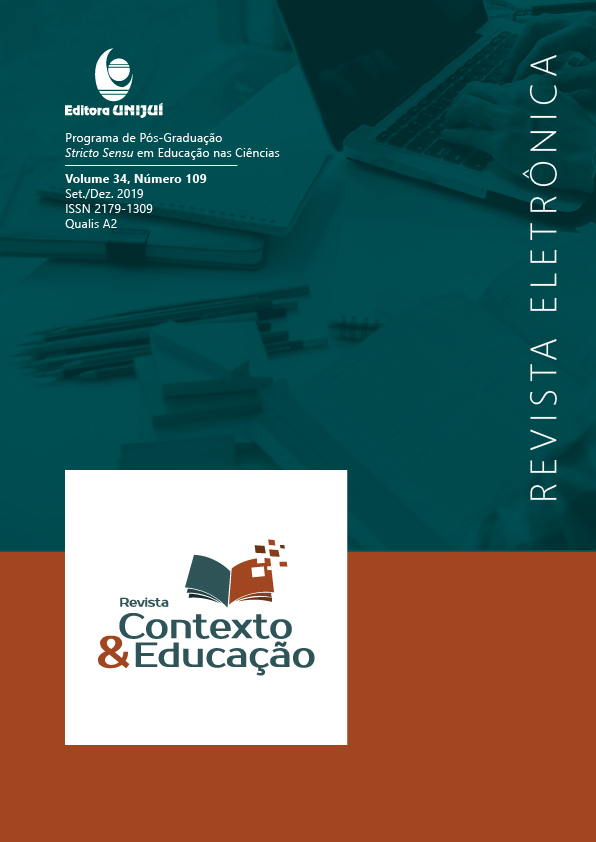UTILIZAÇÃO DE MODELOS DIDÁTICOS TATEÁVEIS COMO METODOLOGIA PARA O ENSINO DE BIOLOGIA CELULAR EM TURMAS INCLUSIVAS COM DEFICIENTES VISUAIS
DOI:
https://doi.org/10.21527/2179-1309.2019.109.150-169Keywords:
Visual Deficiency, Didactic Models, Cell, InclusionAbstract
The understanding of cellular structures, due it microscopic nature, requires a high level of abstraction, and it becomes a challenge for students with and without visual limitation. Alternative methodologies can enable students to visualize, manipulate and touch on models that represent real cell structures, and thus improve the learning. In this study, we tested the hypothesis that three-dimensional models of several cell types, as well as the process involving cells (cell multiplication and healing), initially tactilely used, can be an efficient tool for the teaching of Cell Biology in a perspective of inclusion of pupils visually impaired. Participated of study 23 seers and 5 visually impaired students, 8 and 9 years of elementary school, from two public schools in Rio Grande do Sul- Brazil. The results showed that the use of three-dimensional didactic models, constructed in such a way as to be able to manipulate them, can contribute to the inclusion of students with visual impairment in the regular classroom, as well as make the teaching of cellular biology more attractive and dynamic. Seer students first and have made good use of learning about the diversity of cell forms and the role of cells in growth and healing processes.
Downloads
Published
How to Cite
Issue
Section
License
By publishing in Revista Contexto & Educação, authors agree to the following terms:
All works are published under the Creative Commons Attribution 4.0 International License (CC BY 4.0), which allows:
Sharing — to copy and redistribute the material in any medium or format;
Adaptation — to remix, transform, and build upon the material for any purpose, even commercially.
These permissions are irrevocable, provided that the following terms are respected:
Attribution — authors must be properly credited, a link to the license must be provided, and any changes made must be indicated.
No additional restrictions — no legal or technological measures may be applied that legally restrict others from doing anything the license permits.
Notices:
The license does not apply to elements that are in the public domain or covered by legal exceptions.
The license does not grant all necessary rights for specific uses (e.g., image rights, privacy, or moral rights).
The journal is not responsible for the opinions expressed in the articles, which are the sole responsibility of the authors. The Editor, with the support of the Editorial Board, reserves the right to suggest or request modifications when necessary.
Only original scientific articles presenting research results of interest that have not been previously published or simultaneously submitted to another journal with the same purpose will be accepted.
Mentions of trademarks or specific products are intended solely for identification purposes and do not imply any promotional relationship by the authors or the journal.
License Agreement (for articles published from October 2025): Authors retain the copyright to their article and grant Revista Contexto & Educação the right of first publication.


